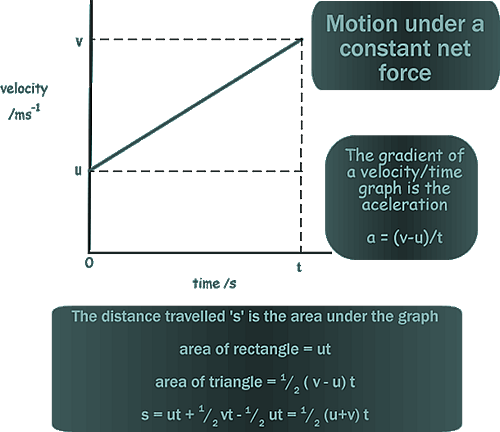Newton's Equations of Motion
Consider the graphic above. If we plot a graph of an object's motion under the influence of a constant force, we get a graph just like that. We use letters to represent values:
Derivation of the Equations of MotionWe get two relationships that can be expressed as an 'equation of motion' directly from the graph above:
v = u + at
s = ½ (u + v)t
s = ½ (u + (u + at)) t = ½ (2u + at)) t = (u + ½ at)t s = ut + ½at2
v2 = (u + at)2 v2 = u2 + a2t2+ 2uat v2 = u2 + 2a (½at2 + ut) and substitution of (½at2 + ut) as 's' from Equation 3 gives us: v2 = u2 + 2as The thing to remember about these equations is they can only be applied to a situation in which a constant net force is acting.There has to be constant acceleration for them to apply. Most examination questions you will be given to use these equations in will concern objects falling under gravity - air resistance has to be negligible for them to be applicable... and you may be expected to state that air resistance is being ignored. |
Follow me...
|






